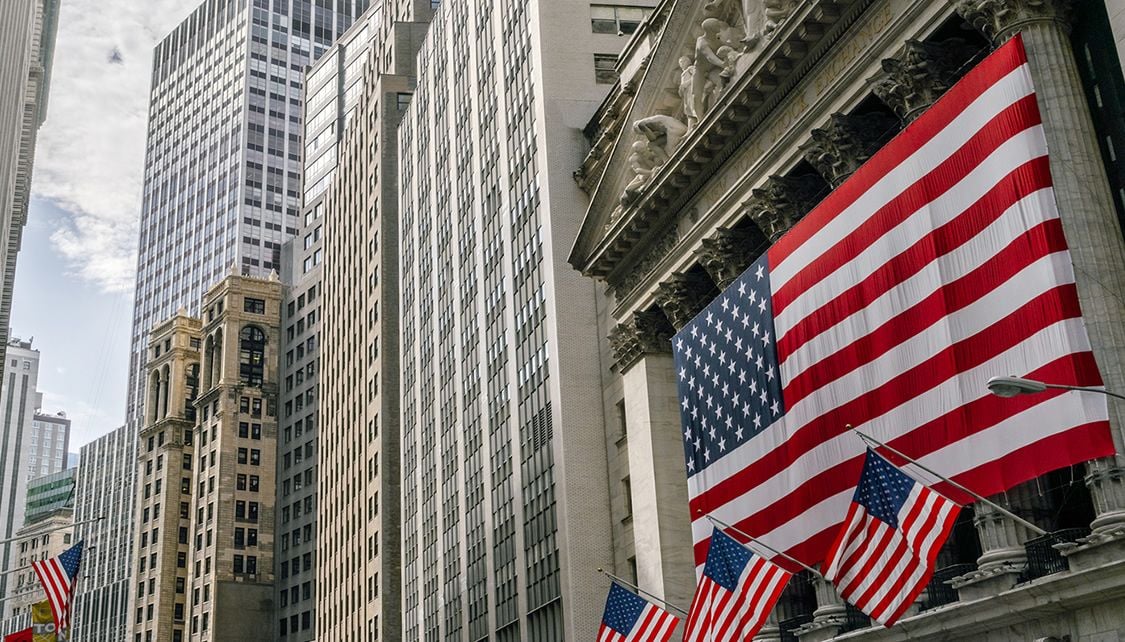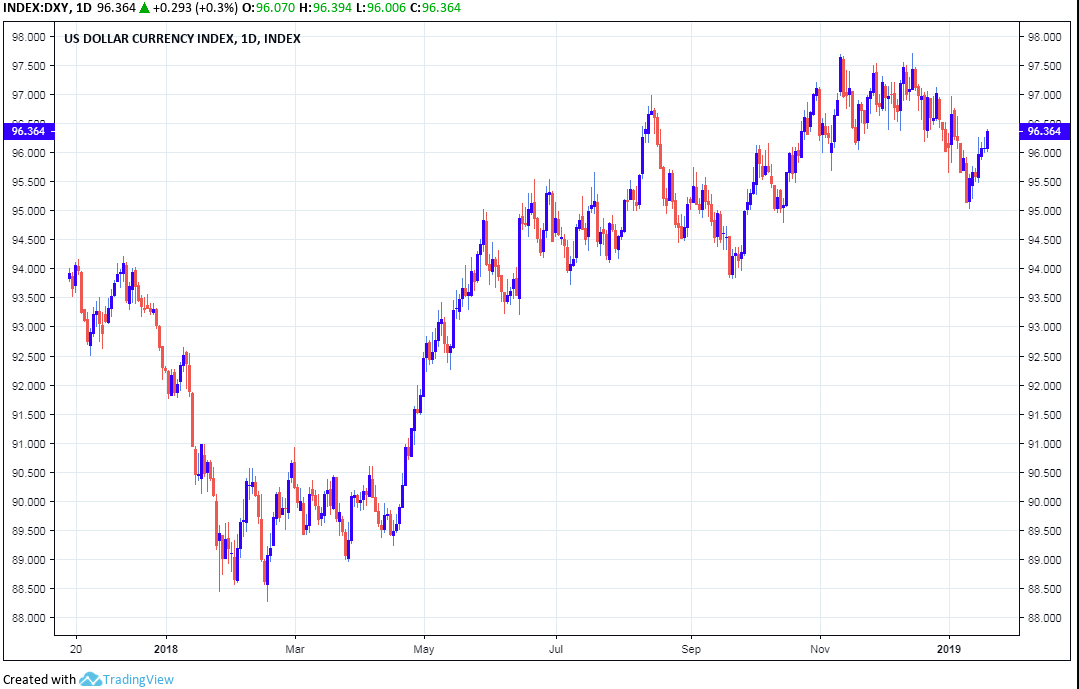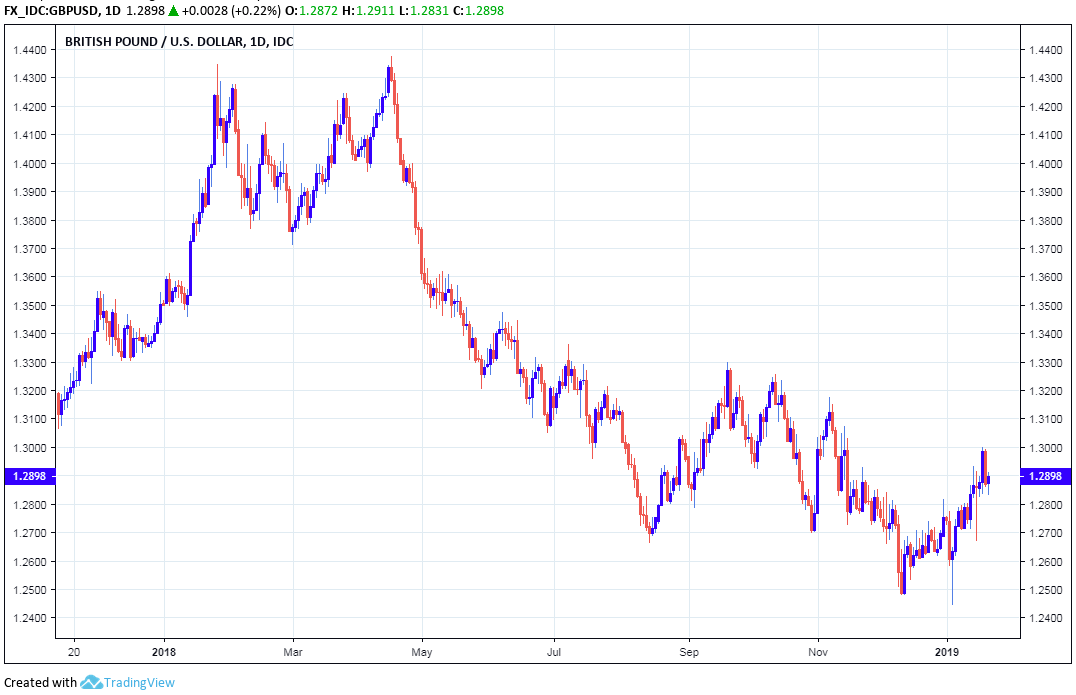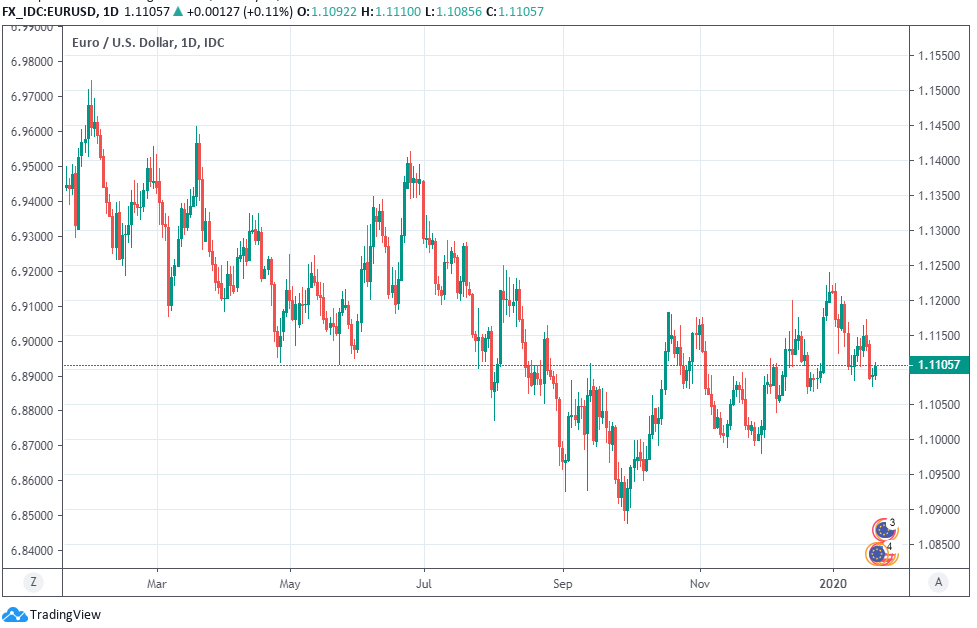The U.S. Dollar: Washington's Paralysis Means Lower Growth for Longer says CIBC
- Written by: James Skinner

© Adobe Stock
- U.S. government shutdown costs economy 0.13% of GDP per week.
- Is slowing economy, may deter the Fed and could soon dent the USD.
- Economic cost of political polarisation to increase in 2020 says CIBC.
The U.S. government shutdown is acting as a weight around the ankles of the economy and with no end in sight this Monday, it could soon begin to impact the Federal Reserve (Fed) policy outlook and weigh on the Dollar, according to CIBC Capital Markets.
Dysfunction in Washington might be good for the Pound-to-Dollar and Euro-to-Dollar rates, particularly if a weakening of the greenback coincides with some kind of progress that helps resolve the Brexit standoff in Westminster.
CIBC forecasts suggest U.S. growth will hold firm during the first half of the year, while other economies elsewhere continue to struggle with a global slowdown, which is expected to support the Dollar throughout the next two quarters.
But the U.S. economy is also expected to slow eventually, with this moderation becoming apparent in the second half of the year just as the Eurozone and other economies begin to stabilise. Such a shift is projected to act as a catalyst for a turn lower in the U.S. Dollar trend.
That is CIBC's "base case" outlook for the greenback in 2019, issued to clients at the beginning of January. However, events in Washington over the last three weeks could be hastening the moderation of growth in the U.S and if they are, that might mean that Judgement Day is drawing close for the Dollar.

Above: U.S. Dollar index shown at daily intervals.
"The country’s economic gears can continue to churn only because we have hundreds of thousands of workers on the job without pay, but a volunteer civil service is incompatible with the need to pay rent and feed a family," says Avery Shenfeld, chief economist at CIBC Capital Markets.
The U.S. government effectively closed for business on December 23 after lawmakers failed to agree the nation's budget for the year ahead.
Under U.S. law if both houses of Congress and the President cannot agree a budget for the year ahead before the date when it is supposed to be agreed, the Federal government must close.
This means most federal agencies close and non-essential government workers are laid off until the deadlock is resolved, which is bad for the economy given the large share of GDP that is accounted for by government spending as well as spending by public sector employees.
President Donald Trump has refused to sign the annual and temporary draft budgets that have been put before him because they did not include around $5 bn of funding for a politically contentious wall along the border with Mexico.
The House of Representatives has supported the provision of such funding but the Senate opposed it, forcing the government to close and leading to a stand-off between Congress and the White House. Trump made a compromise proposal to the opposition Friday, although it is yet to gain traction with Democratic Party lawmakers.
The Council of Economic Advisers says the shutdown and paralysis in Washington is reducing quarterly GDP growth at a rate of -0.13% per week.
"Our rough estimate is that if it lasts to the end of January, annualized GDP growth for Q1 would be about 0.5% weaker. Should it extend to March end, disruptions would start to impact the movement of goods and people, key regulatory functions and so on, and growth could end up near zero," says Shenfeld.

Above: Pound-to-Dollar rate shown at daily intervals.
All of this matters for the Dollar because of the implications it might have for the interest rate outlook. Fed Chairman Jerome Powell said earlier in January the bank will wait for a while before raising rates again, in order to observe developments in the global economy.
The Fed's concern is that a slowdown in Europe and China will eventually lower the economic temperature in the U.S., undermining the outlook for inflation and reducing the economy's ability to withstand further interest rate rises.
Shenfeld, and some within the wider market, have been banking on growth holding up well enough for the Fed to raise rates once before the middle of the year. He projects the U.S. economy will slow thereafter, confirming an end of the Fed's tightening cycle and leading to a gradual decline by the Dollar.
However, seasonal trends mean the first quarter of any year can often be disappointing as far as growth in the U.S. is concerned and with the four-week old shutdown reducing GDP at an increased clip, there is a chance that U.S. economic figures surprise on the downside for some months to come.
This could keep the Fed in wait-and-see mode for a little bit longer and would almost certainly be bad for the Dollar unless such a slowdown is accompanied by an even steeper deceleration overseas, in which case the Dollar's safe-haven status might see it remain supported. But that's just the beginning of it.
"This is a dispute over a mere $5 billion of spending in a $4.5 trillion budget, and in reality, less than that assuming there’s a half way compromise. The inability to reach a bi-partisan middle ground shows just how polarized US politics now are, and that will impact more broadly on 2020 fiscal policy," warns Shenfeld.

Above: Euro-to-Dollar rate shown at daily intervals.
Shenfeld says the most important insight to take from recent events in Washington is not simply that dysfunction will hasten an economic slowdown and put a dent in the currency, but rather the message the polarised climate on Capitol Hill sends about the outlook for 2020 and beyond.
His point is that with the economy pumped up on stimulus resulting from President Trump's tax cuts, it now requires increasing levels spending simply just to keep the expansion going and if lawmakers cannot agree a compromise covering barely 1% of the overall budget, what chance do they have of agreeing to set aside differences on larger and more essential spending packages?
"The lesson of this shutdown is that government has ceased to function well in Washington. Yes, someday soon federal workers will be paid again. But more meaningfully, the default policy outcome from a polarized D.C. will be a fiscal tightening that adds to the slowing of growth in 2020," Shenfeld warns.
Shenfeld and the CIBC team already forecast the Pound-to-Dollar rate and Euro-to-Dollar rates would recover to 1.36 and 1.17 respectively before the end of June, but if paralysis or infighting do hasten the slowdown in the U.S., then those forecasts could ultimately be realised sooner rather than later.

Time to move your money? Get 3-5% more currency than your bank would offer by using the services of foreign exchange specialists at RationalFX. A specialist broker can deliver you an exchange rate closer to the real market rate, thereby saving you substantial quantities of currency. Find out more here.




